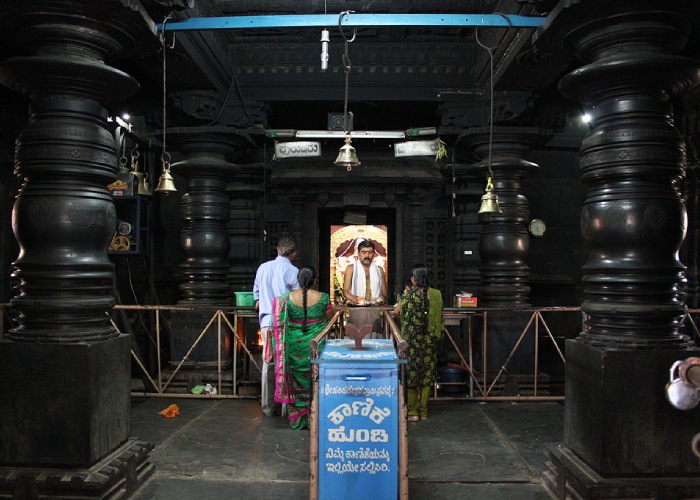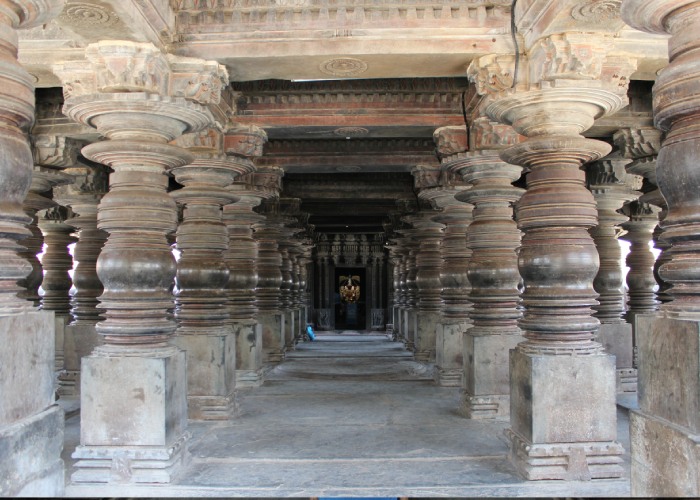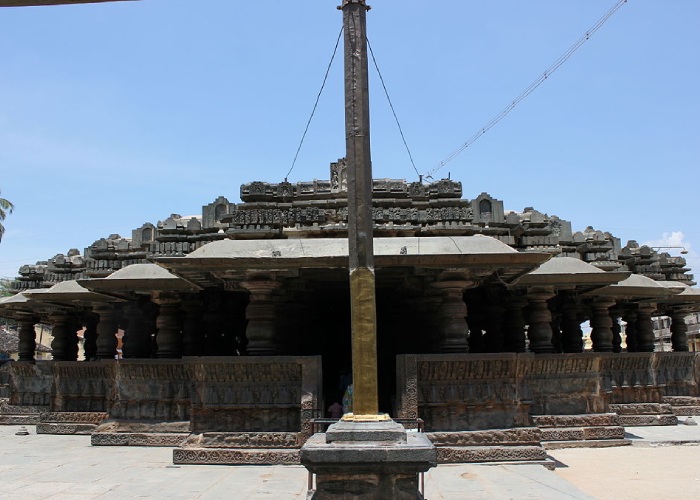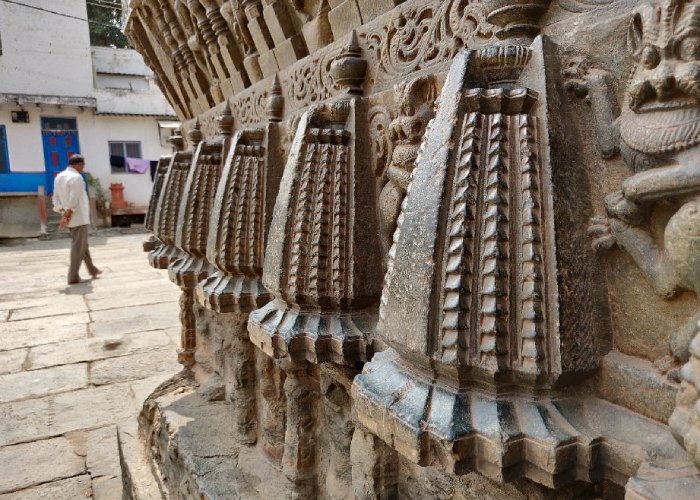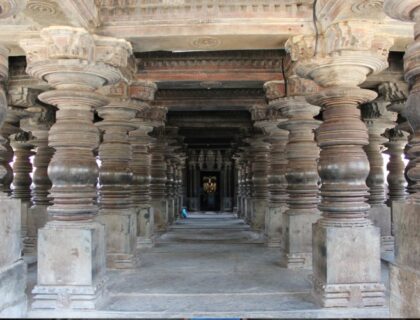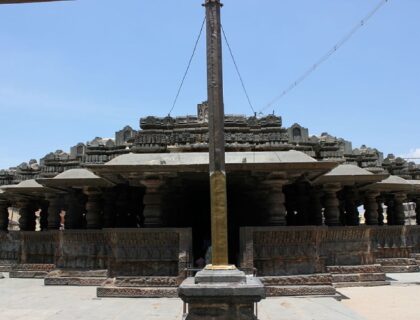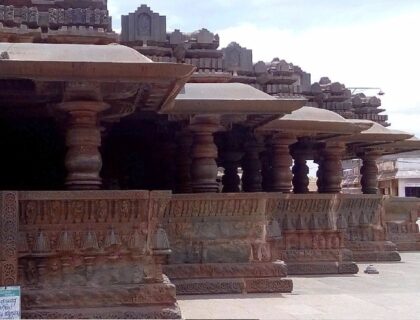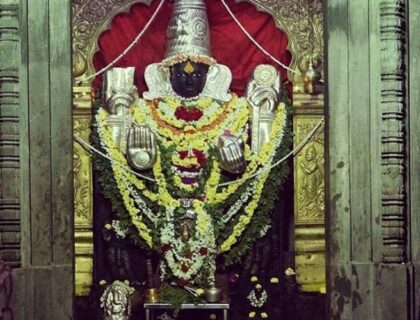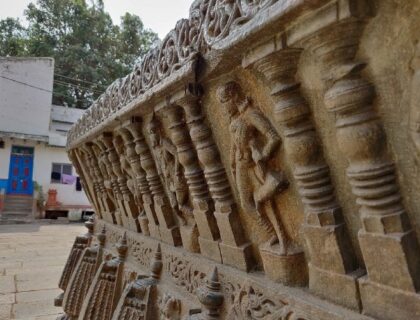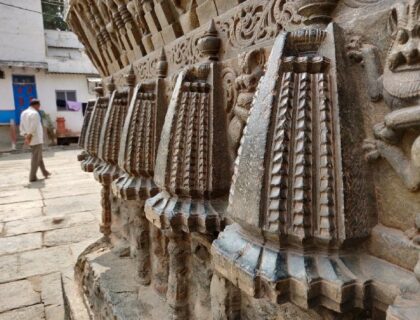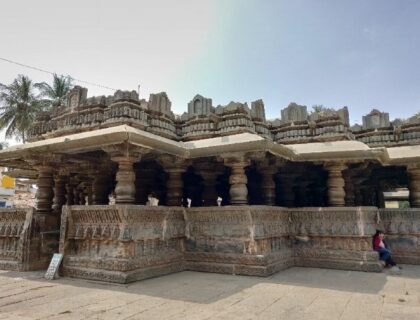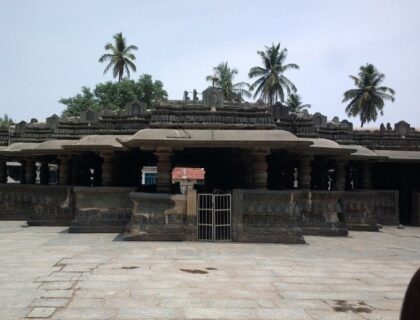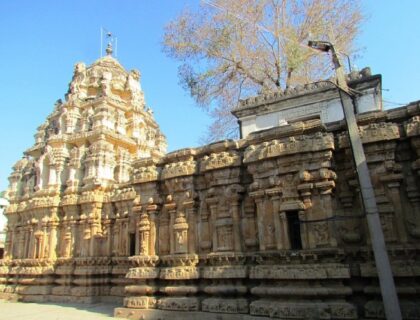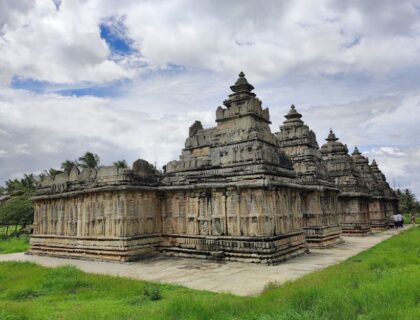Harihareshwara Temple Harihar
The Harihareshwara Temple is a Hindu temple dedicated to Harihara, a fusion of the Hindu gods Vishnu and Shiva. located in Harihar, Karnataka, India. The temple was built between 1223 and 1224 CE by Polalva, a commander and minister of the Hoysala Empire King Vira Narasimha II. Soma, a commander of King Narasimha III of the same dynasty, made some additions in 1268 CE.
The deity’s image is a fusion of Shiva’s right vertical half and Vishnu’s left vertical half. The image holds Shiva’s attributes in its right hand and Vishnu’s in its left. The hills of Harihareshwar, Pushpadri, Harishinachal and Bramhadri surround this place.
Legend of the Harihareshwara Temple
According to Hindu legend, a demon named Guha (or Guhasura) once lived in these areas and ruled over a vast area stretching from Uchchangi Durga in the east to Govinahalu in the south, Mudanur in the west, and Airani in the north. Guha successfully appeased the lord Brahma with his penance and obtained a boon that made it impossible for either Hari (Vishnu) or Hara (Shiva) to kill him alone.

Guha then became a frequent tormentor of both gods and humans. Vishnu and Shiva took the form of Harihara (a fusion) and came down to earth to kill Guha in order to defeat Brahma’s boon. The incarnation is said to have arrived on Earth at nearby Kudalur, at the confluence of the rivers Tungabhadra and Haridra.
History of Harihareshwara Temple
Polava Deva, a commander and minister of King Vira Narasimha II of the Hoysala Dynasty, built the Temple in 1224 CE. In 1268 CE, Soma, a commander of King Narasimha III of the Hoysala Dynasty, renovated and added some structures. During the reign of Vijayanagara, the temple was extensively renovated.

During Muslim rule, the temple was destroyed. The temple’s roof was used to construct a mosque. Tipu Sultan pillaged the temple and damaged the majority of its sculptures. He also turned part of the temple into a mosque. Harihara is also referred to as Guharanya Kshetra and Dakshina Kashi.
The architecture of Harihareshwara Temple
The temple is built in the traditional Hoysala style of staggered square mantapa (hall). As a result, the mandapa’s outer wall has numerous projections and recesses. The mantapa’s wall is a parapet wall supported by half pillars that support the outer ends of the roof (cornice). The open mantapa’s ceiling is adorned with artistic decorations such as lotuses.
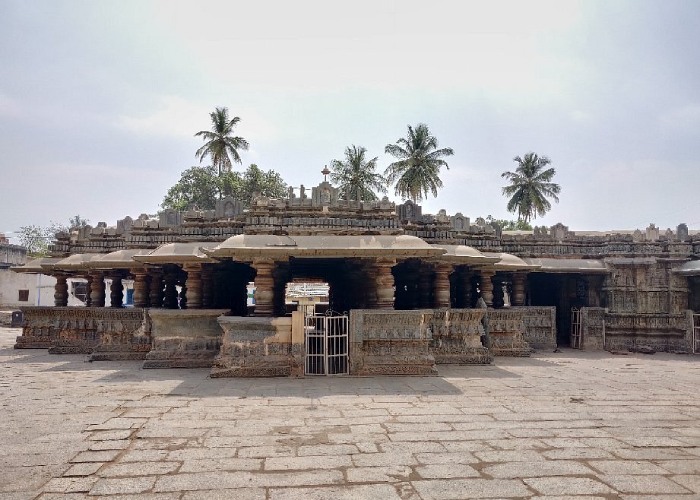
The temple consists of a garbhagriha, an antaralaya, a navaranga maha mandapa, and a spacious multi-pillared sabha mandapa with entrances in the north, south, and west. The entrance gateway (mahadvara) was originally built with five stories, but all of them are now gone.

The ceiling is supported by full pillars that have been lathe-turned. The temple is made of soapstone (also known as potstone). The original shrine tower (Vimana) has been replaced with a brick-and-mortar structure in modern times. Several old Kannada inscriptions and hero stones have been preserved within the temple grounds.
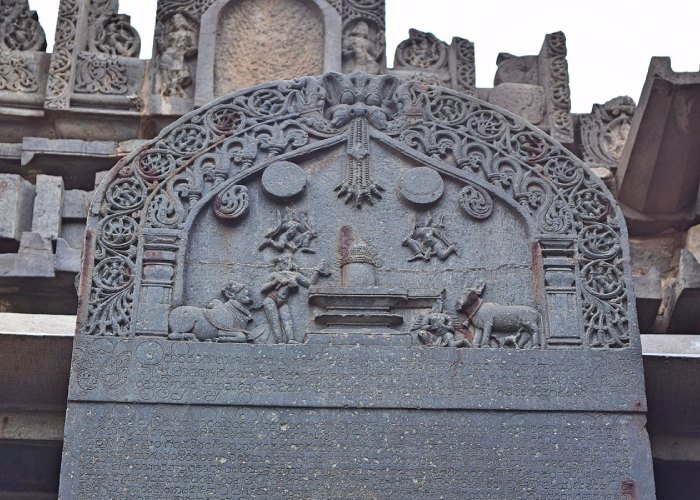
This temple contains old Kannada inscriptions from the 12th and 13th centuries. This location is surrounded by the hills of Harihareshwar, Pushpadri, Harishinachal, and Bramhadri. The temple’s mandapa is square in shape. The pillars (58 in total) and ceiling of the mandapa have unique architecture and decoration in the form of lotuses.

The navaranga has porches on both the south and north sides. The temple tower was rebuilt with red stone in bricks after the original (soapstone) was damaged. The temple of Harihareswara is also known as Dakshina Kasi and Guharanya Kshetra. At Harihar, there are over sixty inscriptions. Many of these inscriptions are described in Epigraphia Carnatica vol. XI (the book containing the epigraphy of the old Mysore region).
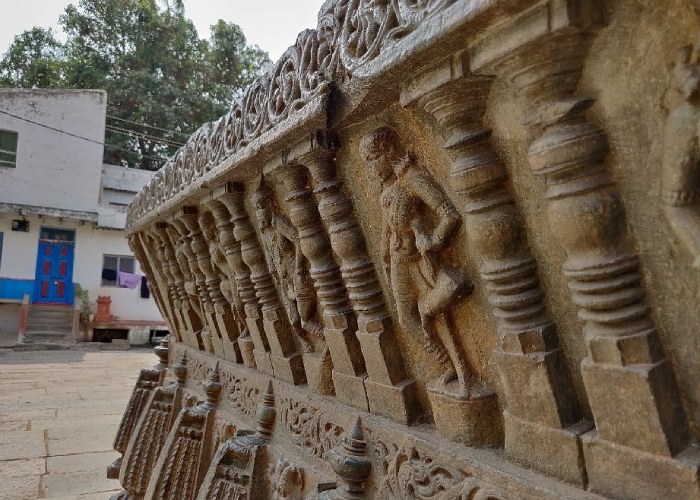
The architectural beauty of this temple must be seen and appreciated because it cannot be described in words. The pillars and carvings are precisely chiselled and constructed. The Archaeological Survey of India has designated this temple as a protected monument. The Harihareshwar region is also known for its clean and pristine sandy beaches, which are only a few hours away.
Facts about Harihareshwara Temple
- The Harihareshwara temple is appropriately referred to as the Kashi of South India. The ‘Harihar’ or “Pushpadri” hill is located near the sea.
- The temple is made of soapstone (also known as potstone). This temple contains old Kannada inscriptions from the 12th and 13th centuries.
- Inside the Garbagriha, the idol of Lord Harihareshwara stands about 6 feet tall, with parts of the deity’s knee buried beneath. This idol is thought to be a Swayambhu Murti (Swayam = Self, Bhu = Generate).
- The temple features a massive Mukhamantapa with 60 pillars. The temple’s exterior and interiors are exquisitely carved.
- Within the temple complex, there is a temple dedicated to Goddess Parvathi. There are two lovely Deepasthambas (pillars for lighting diyas) in front of the main temple, as well as numerous inscription stones throughout the complex.
- The Kalbhairav temple is another ancient temple near the Harihareshwara temple.
- Shrivardhan is a lovely pristine beach near Harihareshwar. Tourists will appreciate the relaxing and peaceful atmosphere here.
- The deities in the temple are worshipped regularly and the temple is very well maintained.
Festivals Celebrated in Harihareshwara Temple
- Shravana: For happiness and wealth, many fasts, offerings, and mantras are performed during the fifth month of the Hindu calendar, known as Shravana.
- Mahashivaratri is a fasting ritual that takes place in the last week of February. It is reminiscent of Lord Shiva bringing Goddess Parvati with him. A Grand Celebration is arranged by priests and the temple committee.
- Vaikuntha Ekadashi – Vaikuntha Ekadashi celebrated during the Tamil month of Margazhi (December–January) is the major festival celebrated in the temple.
- Chitra Poornima is also a major occasion for celebration in the temple.
How to reach Harihareshwara Temple
By Air: Nearest International airport is Bangalore. Hubli is the nearest Domestic airport.
By Railway: Harihara is the nearest Railway Station to Harihareshwara Temple.
By Roadways: The Harihareshwara Temple is well connected to many major cities, and private vehicles are readily available for hire. There are regular buses from nearby cities.
Also Read – Chennakeshava Temple Somanathapura
Location
Facilities
- Drinking Water
- Pooja Item Shops
- Prasad Shops
- Restaurants Nearby
- Resting Room


